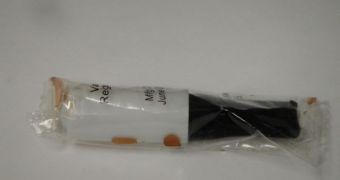E-cigarettes, officially called 'electronic nicotine delivery systems,' are more and more popular among smokers who want to reduce the risks of smoking-related cancers but will not give up their favorite vice – nicotine.
They are available worldwide and in the US, you can find them in shopping malls in most states, and, of course, on the Internet.
But in order to see just how 'safe' they are, a group of scientists at the University of California, Riverside tested five e-cigarette brands and found a lot of issues, enough to conclude that e-cigarettes are potentially harmful.
After their analysis, they urge regulators to consider removing the products from the market until their safety is adequately evaluated.
Prue Talbot, the director of UC Riverside's Stem Cell Center, whose lab led the research, and also a professor of cell biology and neuroscience, conducted the study along with Anna Trtchounian, the first author of the research paper.
They looked at the design, the accuracy and clarity of labeling, nicotine content, defective parts, disposal, leakiness, errors in filling orders, instruction manual quality and advertizing, for NJOY, Liberty Stix, Crown Seven (Hydro), Smoking Everywhere (Gold and Platinum) and VapCigs.
They have made several observations that include the lack of important information concerning e-cigarette content, use and essential warnings, on batteries, atomizers, cartridges, cartridge wrappers, packs and instruction manuals.
Some e-cigarette cartridges leak, and that could expose nicotine, an addictive and dangerous chemical, to children, adults, pets and the environment.
For now, there are no methods for proper disposal of e-cigarettes products and accessories, including cartridges, which could result in nicotine contamination from discarded cartridges entering water sources and soil, and adversely impacting the environment.
And last but not least, the manufacture, quality control, sales, and advertisement of e-cigarettes are unregulated.
The principle behind the e-cigarette is that instead of burning tobacco, it vaporizes nicotine along with other compounds, in the form of aerosol resulting from heating.
Although it is said to be safe because it does not contain the thousands of chemicals and toxicants emanating from tobacco combustion, nothing is actually known about the chemicals within the aerosolized vapors of e-cigarettes.
Talbot said that “as a result, some people believe that e-cigarettes are a safe substitute for conventional cigarettes.
“However, there are virtually no scientific studies on e-cigarettes and their safety.
“Our study – one of the first studies to evaluate e-cigarettes – shows that this product has many flaws, which could cause serious public health problems in the future if the flaws go uncorrected.”
Kamlesh Asotra, a research administrator at University of California Tobacco-Related Disease Research Program (UC TRDRP), said that “more research on e-cigarettes is crucially needed to protect the health of e-cigarette users and even those who do not use e-cigarettes.
“Contrary to the claims of the manufacturers and marketers of e-cigarettes being 'safe,' in fact, virtually nothing is known about the toxicity of the vapors generated by these e-cigarettes.
“Until we know any thing about the potential health risks of the toxins generated upon heating the nicotine-containing content of the e-cigarette cartridges, the 'safety' claims of the manufacturers are dubious at best.
“Justifiably, more information about the potential toxic and health effects of e-cigarette vapors is necessary before the public can have a definitive answer about the touted safety of e-cigarettes.
“Hopefully, in the near future, scientists can provide firm evidence for or against the claimed 'safety' of e-cigarettes as a nicotine-delivery tool.”
The study was funded by a grant to Talbot from TRDRP, and the results appear in this month's issue of Tobacco Control.

 14 DAY TRIAL //
14 DAY TRIAL //